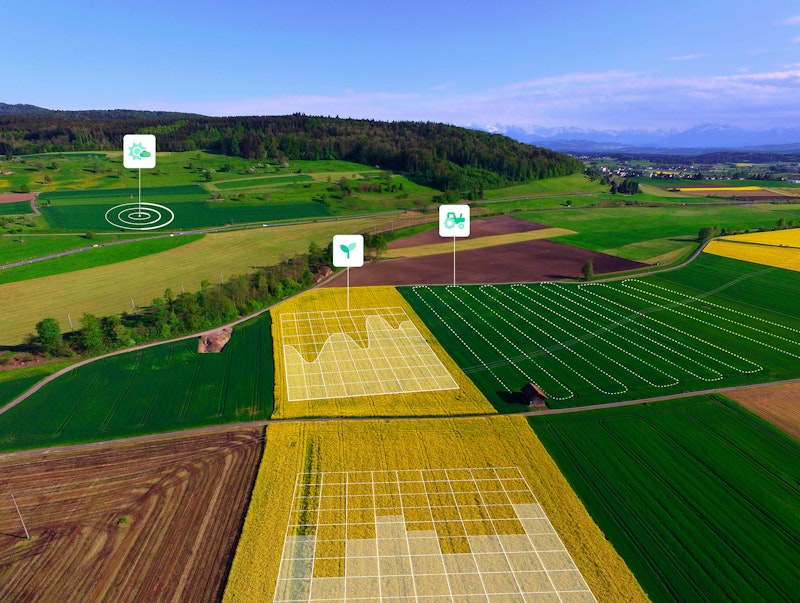-
Spending on AI in agriculture is projected to grow from $1.7 billion in 2023 to $4.7 billion in 2028, with a CAGR of 23.1%, according to Research and Markets.
-
The global IoT in agriculture market size was valued at $27.1 billion in 2021 and is projected to reach $84.5 billion by 2031, according to Allied Market Research.
These are just a few of the stats I found with a quick google search on ‘global digital agriculture market’. I don’t know if these numbers are accurate or not but, what’s very clear from these and many other ‘researched statistics’, is that the market for ‘gathering information and creating structured data through a variety of sensors (IoT), and the artificial intelligence (AI) or machine learning (ML) systems needed to interpret this data and turn them into actionable suggestions’, is large and constantly growing.
With the sheer number of different variables involved in the process of growing crops and raising livestock, agriculture is literally one of the most ‘fertile’ industries for these technologies to grow in. It is easy to see where IoT monitoring, AI and ML are already having an impact today but, with the rapid development and uptake of AI in daily life through ChatGPT and other language model-based chatbots, it stands to reason that the scope and scale of AI in agriculture will increase quickly. Below are five ways AI has the highest potential to continue improving agriculture in 2024:
1. Gathering standardized data will be prioritized to improve AI technology.
To power language models such as ChatGPT, or any other AI-based technology, a large set of standardized data is needed. With an ever-increasing number of variables needed as input into AI applications, through the increased uptake of IoT devices for example, standardization of the data collected from these devices and any other data source is key.
Most GIS software providers, such as ESRI for example, already provide clients with the option to use AI in their applications, but data is still needed to feed models. Structured and standardized data is used in AI applications to base predictions and decisions on, and can also be used to train AI models, and improve their performance and accuracy. Continuous improvement in performance and accuracy is key to a further increase in the uptake of AI in agriculture, which is why gathering standardized data will be a priority in 2024 (and beyond).
2. AI will be used to improve the data gathering process
As mentioned above, gathering standardized data to power AI applications is key - a significant portion of agricultural data however is still gathered manually (written for example) and is not digital, structured or standardized yet. AI can assist in turning non-digital and unstructured data into structured digital data that can be utilized further, instead of simply being stored (in a filing cabinet). Between OCR (Optical Character Recognition) software and AI models, the technology exists already to make this happen. Agtech companies are coming to the realization that convincing farmers to use their particular app for data entry isn't easy, and that using technology that helps create standardized data without needing farmers to change their habits instead is preferable, which we’ll see more of in 2024.
3. Agriculture’s quest for sustainability will be sped up by AI
Sustainable agriculture revolves around protecting the environment, aiding and expanding natural resources, and making the best use of non-renewable resources. What this means in real terms is ‘precision’: being precise with input usage and farming methods, and focusing on producing the highest possible yield from the inputs used. So instead of just focusing on the highest yield per acre, focusing on the highest yield per gallon of water, pound of nitrogen, or whichever input is the most limiting factor. To achieve the highest possible level of precision and therefore sustainability, huge amounts of data have to be collected, crunched and turned into actionable insights, which is where AI comes in. AI takes the guesswork and ‘how I’ve always done it’ factors out of the equation and offers data-driven insights, and this trend will continue to become stronger in 2024.
4. AI will continue to improve agricultural equipment performance
From spraying to weeding and many other in-crop applications, AI is transforming the way the world farms. John Deere's AI-powered See & Spray technology recognizes the difference between cultivated plants and weeds so that individual plants can be treated, reducing the use of pesticides. Stout’s Smart Cultivator works as an AI-powered in-row weeder, which uses mechanical actuation to remove weeds without the use of chemicals and without needing large field crews. New AI-powered equipment gets introduced every year, and 2024 won’t be an exception; this part segment of the agricultural industry is revolutionizing rapidly.
5. Uptake of AI and ML-based robotics will continue
Robots are already commonplace on many farms, and this trend will continue in 2024. Increased sophistication of AI and ML models opens the door to further on-farm automation and adoption of robotics, helping farmers combat the shortage of agricultural workers and keeping operating costs down. From self-driving tractors to fully automated swarms of drones tending to fields, many crops already get grown with AI and ML-powered robots involved in certain parts of the process; this will become more common rapidly.





